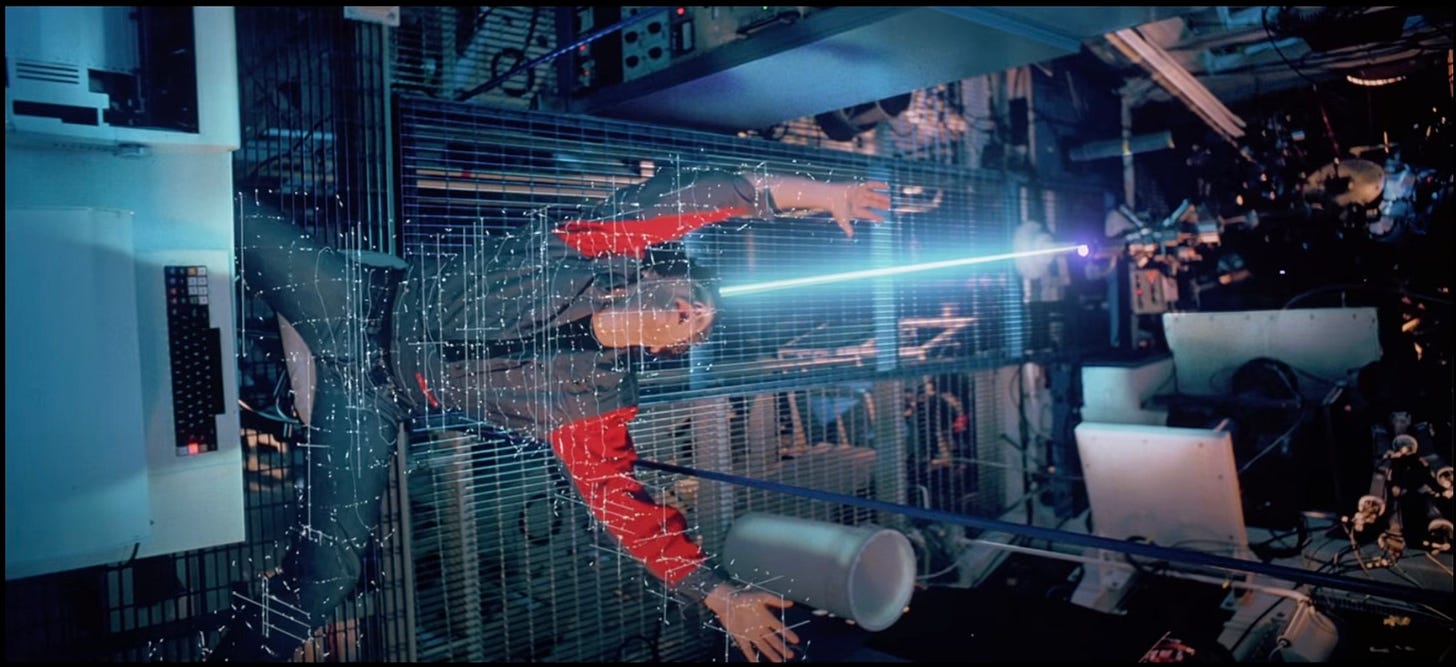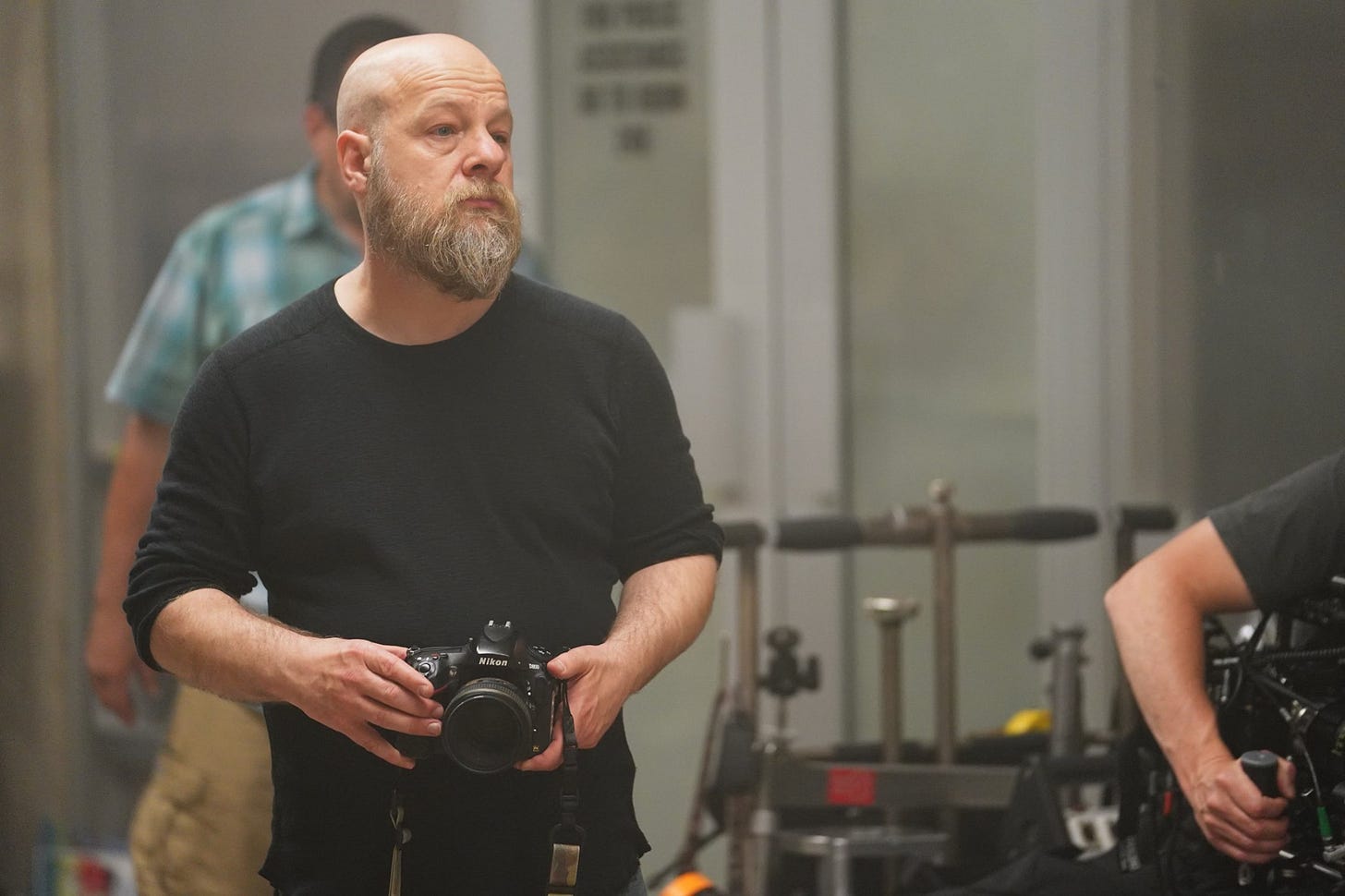Taking the Ideas Seriously
Some AI film developments from people who care about doing it right.
It’s important that people take serious things seriously.
AI filmmaking can look silly. Frightening. Even horrifically ugly at times. What it’s not is a fad that will fizzle out. As the experts often remind (or warn) us: today is the worst it’s ever going to be.
It is a serious thing.
If you care about making films you should not ignore it. You should, as the logic flows, take it seriously. This doesn’t mean energetically pursuing the current state of affairs, adding a LinkedIn AI credential, or shoehorning AI into every creative meeting (“Has hair & makeup explored AI options?”). It means considering this technology as something that will be used pervasively, both in good ways and bad ways. Anyone in the business of making images, should take it seriously.
Speaking of which, what is the current state of affairs?
Where things stand
Individuals, products, and companies are pursuing generative AI with a quarterly vigor. Every week AI is added into products with a naive enthusiasm. LinkedIn wants me to write career-related posts with AI. Instagram wants me to /imagine pictures in personal messages with friends.
A lot of this corporate innovation feels like empty trend-chasing. Are we enjoying a golden age of AI-assisted LinkedIn posts?
The world is still, in many ways, desperately in search of positive examples of how to use AI. People know AI will be helpful, but aren’t exactly sure how.
The same uncertainty pervades in filmmaking. Filmmakers are eager to use generative AI, but many are not sure how or why exactly. A lot of AI videos amount to technical demonstrations of ‘look what it can do’ rather than videos we want to watch as an end in themselves. There are, however, increasingly exceptions.
By the people taking it seriously.
Where it could go
Whatever the current state of affairs, it’s a near guarantee that Generative AI will be a big part of filmmaking.
Filmmakers are in the business of producing video files that contain pixels and sound. Since the 1980s, more and more of these pixels are manipulated on computers. It’s cheaper to change pixels on a computer than to move and photograph their physical counterparts on a unionized film set. This trend-toward-pixel has progressed unfettered for the last 40 years. Generative AI looks like its logical conclusion— the ability to fully generate the pixels on the computer.
We don’t know what this final process will look like. Without a real vision, companies are piling dollars and man-hours into building it. The path forward forks in many directions. And I mean many.
There are good futures. And bad ones. Futures where we sit in front of infinite content engines. Futures where you watch classic movies starring yourself. At a recent lunch, someone pitched me a future where monied interests would tell brand stories starring friends from your phone’s photo album.
The twist is the technology doesn’t have a pre-destined form. It will be determined by the greater sum of people’s actions. The people who use the technology in the most compelling way as a critical mass will attract the attention, investment, and underlying research.
For the purposes of this column, we can be so pretentious as to call these people artists.
These are the people approaching AI film with intentions. Who see an opportunity. Who want to do a serious thing.
A Recent Serious Thing
Today I want to highlight a brief statement written by director David Slade for the 50 filmmakers participating in the Culver Cup, a high-profile AI film competition organized by FBRC.ai (a hub of AI film startups and filmmakers in LA) and Amazon at Amazon Studios’ Culver City theater.
Slade is a well-established film director. He’s watched out-of-focus lights for two hours with the London avant-garde. And he’s directed crowd-pleasing movies for Netflix and Lionsgate. The blend of commercial success and bohemian curiosity makes him uniquely comfortable experimenting with generative AI. He’s simultaneously uninterested in it as a merit badge and unbothered by its divisive reputation. He just wants to fish for images from his dreams which he does frequently in short generative films.
The Culver Cup organizers wanted the competition to have a Point-of-View on generative film, to have real intention. They asked me for advice and we decided to approach David Slade about writing a treatment for the 50 filmmakers to adapt into films. He wrote not only a treatment, but a statement to all 50 filmmakers on the nature of storytelling and generative AI.
Below is an excerpt of the statement. I share it as an interesting look into what’s happening in the AI film scene.
[…]
So here’s the brief: We’re looking for storytelling in a liminal space—this time, it’s a diner. That’s it.
One additional guideline is encouraged:
Please avoid adding “In the style of…” or other ways of referencing someone else’s work. In this new age of AI storytelling (or “Neo Cinema,” as John Gaeta calls it), we ask that your story be original—free from references and derivatives. This means keep your trailers for Star Wars based on original concept art, Walt Disney's Snow White as directed by David Cronenberg, and the various other memetic mashups out of this one.
We have a great opportunity before us - a whole new nascent form of storytelling with which we can do with as we please. This journey is just beginning and we would much rather see new forms of cinema than Memes and recycled pastiches.
We encourage you to embrace abstraction, psychedelia, the surreal, the unexpected or the classic. I am always looking to tell stories with this medium that couldn’t be captured with a traditional camera. Help us shape the future, make it interesting. Until copyright laws catch up with AI, we encourage you to practice originality and avoid borrowing from others.
The future is constantly now, it's different from the past and it's in our hands, let’s focus on what’s happening right now.
For those interested, the term ‘Neo Cinema’ is from John Gaeta (a VFX pioneer best known for inventing Bullet Time in the Matrix films) that refers to films made with computer software (both generative AI models but also 3D modeling softwares like Unreal Engine or Blender). Gaeta also takes the space quite seriously. He recently launched a free streaming platform of Neo-cinema, where he’s already gathered many of the best AI filmmakers.
On a similar note, James Cameron joined the board of Stability.ai, the company behind Stable Diffusion, the most-used AI image model in the world. Cameron made this statement…
“I’ve spent my career seeking out emerging technologies that push the very boundaries of what’s possible, all in the service of telling incredible stories. I was at the forefront of CGI over three decades ago, and I’ve stayed on the cutting edge since. Now, the intersection of generative-AI and CGI image creation is the next wave. The convergence of these two totally different engines of creation will unlock new ways for artists to tell stories in ways we could have never imagined.”
Cameron’s statement sounds like it was written by a PR person. Or ChatGPT. It has considerably less style than Mr. Slade’s. But it’s a significantly positive statement from the biggest director in the world.
Here was the Stability.ai CEO’s statement…
Stability AI's mission is to transform visual media for the next century by giving creators a full stack AI pipeline to bring their ideas to life.
We have an unmatched advantage to achieve this goal with a technological and creative visionary like James at the highest levels of our company. This is not only a monumental statement for Stability AI, but the AI industry overall. […] The next frontier in visual media will be forged by a true fusion of artist and technology, and Stability AI is leading the charge.
Fluffy, but the you can hear the intention.
These tech companies crave vision and direction from artists.
From people who take it seriously.
Whatever’s happening, starts here
The point of this small departure from longer essays is to either remind or educate readers that there are serious people, thinking very deliberately about how this will all work.
And you can be one too.
I encourage artists to get involved in the space and to proactively shape it in a way they like. The doors are open and most of the people involved don’t yet have a clear, well-articulated, positive vision for the future.
The companies building the technology crave artists with a vision. People pointing confidently and saying “There is a there there.”
To echo Slade’s last statement, the future is constantly now.







"This journey is just beginning and we would much rather see new forms of cinema than Memes and recycled pastiches."
If we expect AI to put in the creative effort, this is what we are going to get. If instead we use AI to complement our human creativity, we could be talking about an interesting collaboration.
I discussed this in a recent post based on the work of Basque philosopher Daniel Innerarity: https://writerbytechnicality.substack.com/p/do-it-for-the-machines.
Based on a few underwhelming AI cinematic attempts on YouTube, most people say:
"yes, but AI will never _______ "
My response remains "wait until somebody with taste gets a hold of it", now enter James Cameron.
Being a creative most of my life, when this technology first started to emerge I was certainly on the anti AI fence, and if I'm being honest, my soul remains there, but I know what the future holds.
There's absolutely no stopping this technology, so why not get better at it and use it as another canvas for artistic expression... well.... at least until it "eats us!" ::>_<::